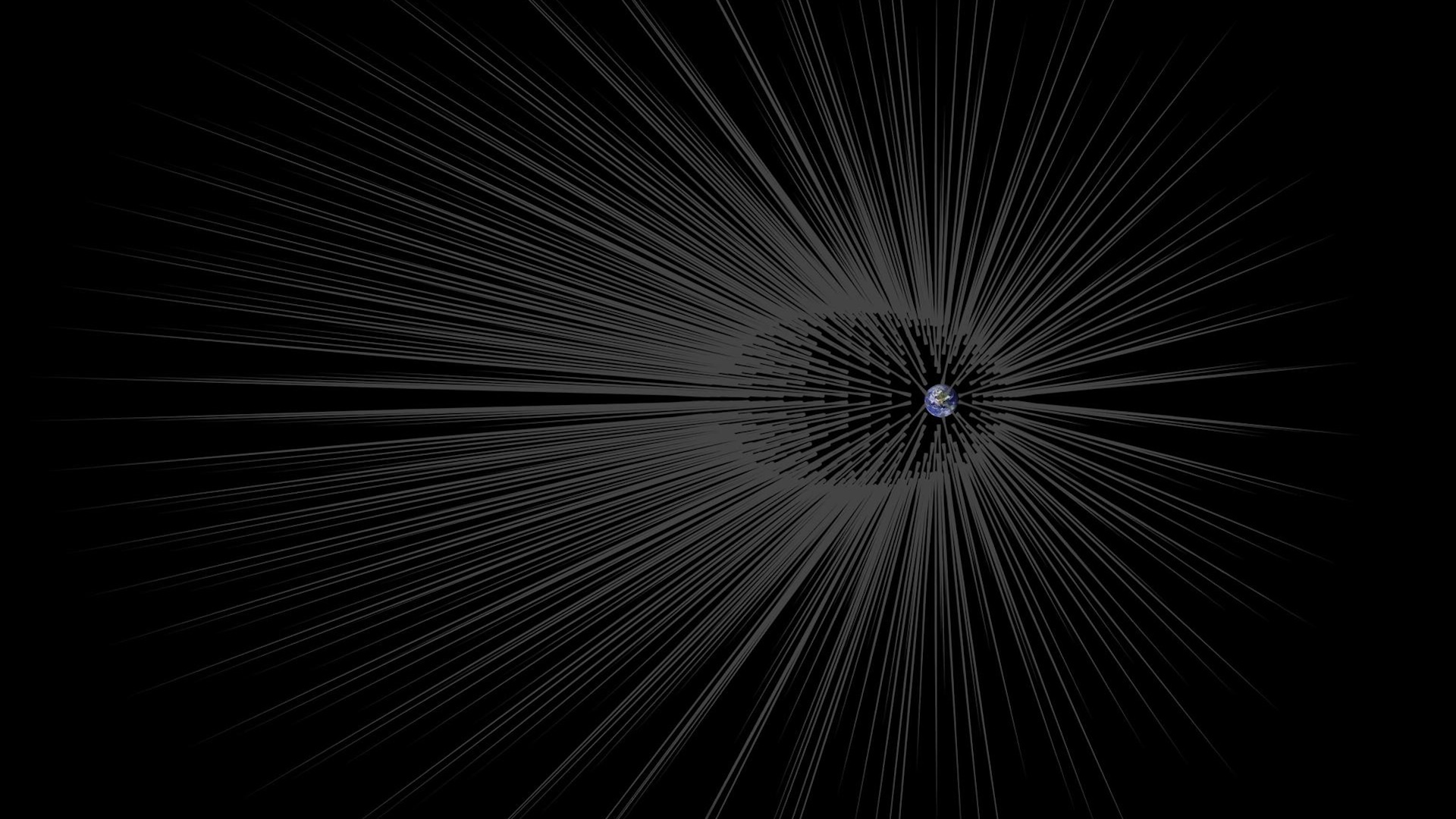Something invisible and 'fuzzy' may lurk at the Milky Way's center, new research suggests
The cores of galaxies may not be made of what we thought, new research suggests — they could hold one giant, invisible star made of mysterious "fuzzy" matter.

Galaxies may be anchored to giant "dark stars" — clumps of invisible matter sitting at their cores, new research suggests.
Although astronomers have an abundance of evidence that most of the mass in any given galaxy is invisible, they do not yet know the identity of this "dark matter." In recent decades, the most promising hypothesis has been that dark matter is made of some kind of heavy particle that rarely, if ever, interacts with light or other matter. But this hypothesis struggles to explain the relatively low densities of galaxy cores, because simulations of dark matter's behavior predict that it should easily clump up to extremely high densities, which does not match observations.
One possible answer to this problem is that the dark matter particles are incredibly light — billions of times less massive than the neutrino, the lightest particle currently known. Dubbed "fuzzy" dark matter, these hypothetical particles are so light that their quantum-wave nature manifests on larger, macroscopic — even galactic — scales. This means they can stabilize into giant clumps of invisible matter, forming dark stars.
This is especially interesting because these dark stars can be extended in space for thousands of light-years but still have relatively low masses, since the particles are so light. Thus, they can potentially form the cores of galaxies, providing the bulk of these galaxies' mass without creating superhigh densities at the galactic centers.
But galaxies are made of more than dark matter — fuzzy or otherwise. They also contain normal matter, distributed in the form of diffuse gas clouds and stars, and it's those elements that astronomers can actually observe. So, to test this idea, we need to understand the link between fuzzy dark matter and normal matter within a galaxy.
Related: 800-mile-long 'DUNE' experiment could reveal the hidden dimensions of the universe
The 'fuzz' in our stars
In a paper published Dec. 17, 2024 on the preprint server arXiv, an international team of astrophysicists explored how galaxies might evolve in response to fuzzy dark matter. For this first step, they did not attempt to recreate an entire complex galaxy. Instead they built a simple toy model that contained only two components: a large percentage of fuzzy dark matter and a smaller percentage of a simple, ideal gas.
Sign up for the Live Science daily newsletter now
Get the world’s most fascinating discoveries delivered straight to your inbox.
They then computed how these two components would evolve under their mutual gravitational influence. They found that, despite initially random behavior, the fuzzy dark matter quickly collected into a large clump in the center, with more diffuse clouds of dark matter surrounding it.
The gas followed along, mixing with the fuzzy dark matter in the center, creating what the researchers named a fermion-boson star, in reference to the two kinds of matter that mixed to form the central object. This star was totally unlike our typical conception of one. It would be gigantic — up to 10,000 light-years across — and almost entirely invisible, except for the subtle glow of the gas spread throughout it.
However, the researchers pointed out that this would serve as the ideal representation of a galactic core, which contains higher — but not too high — densities of normal matter, thereby confirming a key prediction of the fuzzy dark matter model.
The next step is to build even more sophisticated models to explore what these "stars" might look like so that astronomers can compare the predictions to real-world observations.

Paul M. Sutter is a research professor in astrophysics at SUNY Stony Brook University and the Flatiron Institute in New York City. He regularly appears on TV and podcasts, including "Ask a Spaceman." He is the author of two books, "Your Place in the Universe" and "How to Die in Space," and is a regular contributor to Space.com, Live Science, and more. Paul received his PhD in Physics from the University of Illinois at Urbana-Champaign in 2011, and spent three years at the Paris Institute of Astrophysics, followed by a research fellowship in Trieste, Italy.









